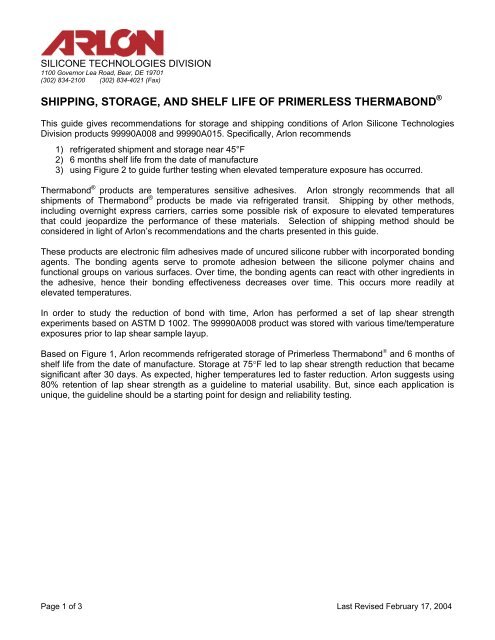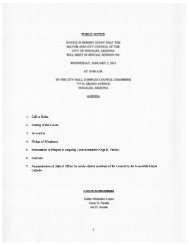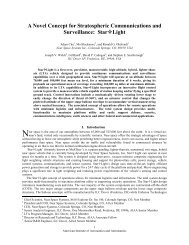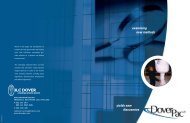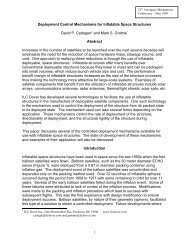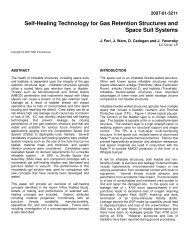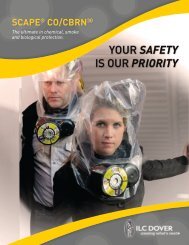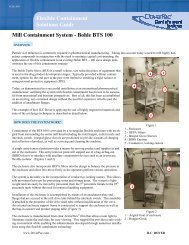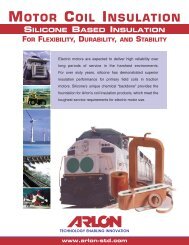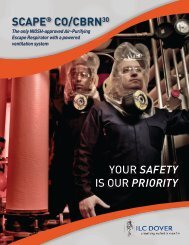shipping, storage, and shelf life of primerless ... - Team-Logic
shipping, storage, and shelf life of primerless ... - Team-Logic
shipping, storage, and shelf life of primerless ... - Team-Logic
You also want an ePaper? Increase the reach of your titles
YUMPU automatically turns print PDFs into web optimized ePapers that Google loves.
SILICONE TECHNOLOGIES DIVISION<br />
1100 Governor Lea Road, Bear, DE 19701<br />
(302) 834-2100 (302) 834-4021 (Fax)<br />
SHIPPING, STORAGE, AND SHELF LIFE OF PRIMERLESS THERMABOND ®<br />
This guide gives recommendations for <strong>storage</strong> <strong>and</strong> <strong>shipping</strong> conditions <strong>of</strong> Arlon Silicone Technologies<br />
Division products 99990A008 <strong>and</strong> 99990A015. Specifically, Arlon recommends<br />
1) refrigerated shipment <strong>and</strong> <strong>storage</strong> near 45°F<br />
2) 6 months <strong>shelf</strong> <strong>life</strong> from the date <strong>of</strong> manufacture<br />
3) using Figure 2 to guide further testing when elevated temperature exposure has occurred.<br />
Thermabond ® products are temperatures sensitive adhesives. Arlon strongly recommends that all<br />
shipments <strong>of</strong> Thermabond ® products be made via refrigerated transit. Shipping by other methods,<br />
including overnight express carriers, carries some possible risk <strong>of</strong> exposure to elevated temperatures<br />
that could jeopardize the performance <strong>of</strong> these materials. Selection <strong>of</strong> <strong>shipping</strong> method should be<br />
considered in light <strong>of</strong> Arlon’s recommendations <strong>and</strong> the charts presented in this guide.<br />
These products are electronic film adhesives made <strong>of</strong> uncured silicone rubber with incorporated bonding<br />
agents. The bonding agents serve to promote adhesion between the silicone polymer chains <strong>and</strong><br />
functional groups on various surfaces. Over time, the bonding agents can react with other ingredients in<br />
the adhesive, hence their bonding effectiveness decreases over time. This occurs more readily at<br />
elevated temperatures.<br />
In order to study the reduction <strong>of</strong> bond with time, Arlon has performed a set <strong>of</strong> lap shear strength<br />
experiments based on ASTM D 1002. The 99990A008 product was stored with various time/temperature<br />
exposures prior to lap shear sample layup.<br />
Based on Figure 1, Arlon recommends refrigerated <strong>storage</strong> <strong>of</strong> Primerless Thermabond ® <strong>and</strong> 6 months <strong>of</strong><br />
<strong>shelf</strong> <strong>life</strong> from the date <strong>of</strong> manufacture. Storage at 75°F led to lap shear strength reduction that became<br />
significant after 30 days. As expected, higher temperatures led to faster reduction. Arlon suggests using<br />
80% retention <strong>of</strong> lap shear strength as a guideline to material usability. But, since each application is<br />
unique, the guideline should be a starting point for design <strong>and</strong> reliability testing.<br />
Page 1 <strong>of</strong> 3 Last Revised February 17, 2004
SILICONE TECHNOLOGIES DIVISION<br />
1100 Governor Lea Road, Bear, DE 19701<br />
(302) 834-2100 (302) 834-4021 (Fax)<br />
100.0%<br />
% Retention - Lap Shear Strength<br />
90.0%<br />
80.0%<br />
70.0%<br />
60.0%<br />
10F<br />
40F<br />
75F<br />
90F<br />
50.0%<br />
0 30 60 90 120 150 180<br />
Time at temp [days]<br />
Figure 1 - Primerless Thermabond ® stability at temperature (0 - 180 days)<br />
Figure 2 focuses on the first 14 days <strong>of</strong> the data set to examine material stability during short term<br />
exposure. Considering these results, Arlon recommends avoiding prolonged exposure to temperatures<br />
above ambient. For example, temperatures inside non-refrigerated <strong>shipping</strong> trucks can <strong>of</strong>ten reach<br />
120°F. Based on this study, exposure to 120°F will reduce bond strength by 20% in ~1.5 days.<br />
Therefore, Arlon recommends refrigerated shipment to maximize bond retention.<br />
Page 2 <strong>of</strong> 3 Last Revised February 17, 2004
SILICONE TECHNOLOGIES DIVISION<br />
1100 Governor Lea Road, Bear, DE 19701<br />
(302) 834-2100 (302) 834-4021 (Fax)<br />
100%<br />
% Retention - Lap Shear Strength<br />
90%<br />
80%<br />
70%<br />
60%<br />
40F<br />
75F<br />
90F<br />
100F<br />
110F<br />
120F<br />
50%<br />
0 2 4 6 8 10 12 14<br />
Time at temp [days]<br />
Figure 2 - Primerless Thermabond ® stability at temperature (0 - 14 days)<br />
In situations where the material has been exposed to temperatures above ambient, Figure 2 can be used<br />
as a guide to determine the likelihood <strong>of</strong> bond strength reduction. For example, consider material that is<br />
exposed to 95°F for 3 days. Interpolating between the 90°F <strong>and</strong> 100°F curves at 3 days in Figure 2<br />
shows that roughly 90% <strong>of</strong> the initial lap shear strength is retained. This analysis shows that there is a<br />
chance <strong>of</strong> bond strength reduction, <strong>and</strong> the material should be evaluated for fitness for use. As another<br />
example, consider material that is exposed to 115°F for 4 days. Interpolation between the 110°F <strong>and</strong><br />
120°F curves at 4 days shows that only roughly 55% <strong>of</strong> lap shear strength is retained in this product.<br />
This degree <strong>of</strong> bond strength reduction is significant. Evaluation <strong>of</strong> the material is likely to show that it is<br />
unfit for use, so the material should be discarded without additional testing.<br />
Lastly, it is important that this guide be used in conjunction with robust design <strong>and</strong> reliability testing.<br />
Primerless Thermabond ® presents a good solution for a broad range <strong>of</strong> diverse applications. Examples<br />
<strong>of</strong> application differences include material surface finishes, fabricated size differences, operating<br />
temperature ranges, <strong>and</strong> many others. Arlon has characterized the material stability at various<br />
temperatures, but Arlon will not guarantee material suitability in every application.<br />
Page 3 <strong>of</strong> 3 Last Revised February 17, 2004


